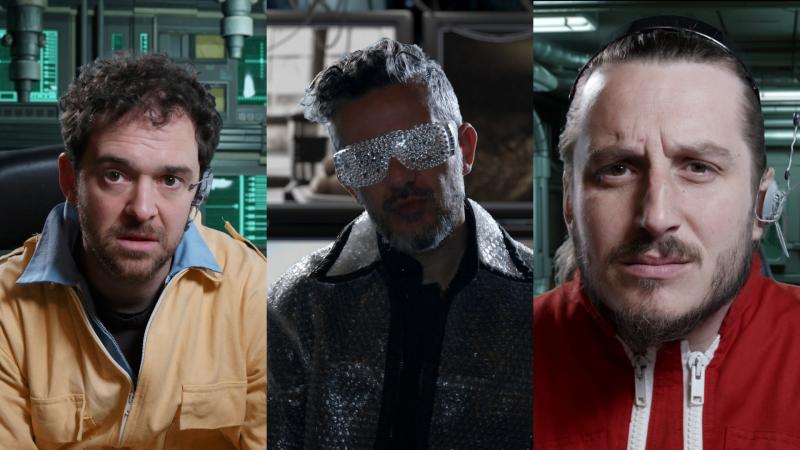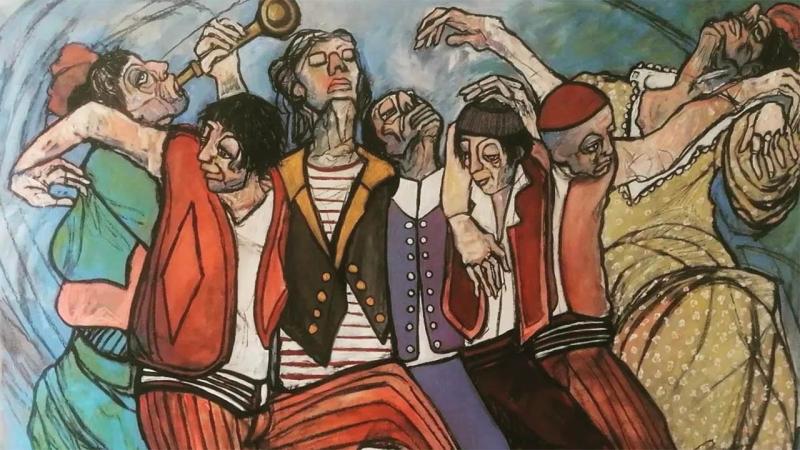Two pillars of Buddhism recently explored through the wonderful book "Seeing that Frees" by the late Rob Burbea, listening to the lectures of James Low that I discovered recently, and tirelessly through the recordings of Alan Watts, who never ceases to amaze me.
Emptiness does not mean there is nothing.
And rightfully so: we see, we hear, we feel. We think. We imagine. Regardless of the origin of these perceptions and the nature of the reality that produces them, we can agree on one thing: we do experience something. So no, there is not nothing.
However, as soon as we focus on a specific object - a tree, a chair, a passerby - we discover that it is extremely difficult to define anything independently of the rest.
The tree, for example. What makes a tree a tree?
Easy! Let's see... A trunk. Branches. Leaves. Roots... There you have it!
Question: does the soil around the roots belong to the tree? Answer: no, the soil is the soil. The tree is the tree. They are two separate things. Fair enough. However, have you ever seen a tree without soil? And if there is no tree without soil, is it reasonable to exclude one from the definition of the other? Along the same line, does the air belong to the tree? Before answering, remember that wood comes from the carbon in the air trapped through photosynthesis. ("Trees don't grow out of the earth" Feynman said, "they grow out of the air.") And, to follow the reasoning to its conclusion, since there is no tree without photosynthesis, and no photosynthesis without the sun, shouldn't the sun be included in the definition as well?
And the shape itself, the color of the leaves, the scents of wood and chlorophyll, the roughness of the trunk, do all of these have any meaning if there are no beings in the same world endowed with vision, smell, and touch to experience them? Therefore, are these characteristics inherent to the tree or inherent to those who perceive them? Is green a property of the leaves or a property of our visual cortex when we look at a leaf? And in that case, is it reasonable to exclude ourselves from the definition?
Tree (noun): Piece of the universe made of soil, air, and sun, with leaves which appear green when observed by some animals.
For Buddhists, nothing exists independently of the rest.
To think of the tree without the soil, the object without context, the part without the whole is to create concepts that mask the true nature of things. Of course, sometimes it's very practical. Our brains not being infinitely expandable, we need to simplify. When I choose my socks in the morning, I don't think every day about the cosmic connection that links each fiber of the fabric to the rest of the universe. I pick the striped ones because they smell less.
The problem arises when we forget that the concept is just a concept.
My sock, like the tree, has no inherent essence, no cardinal characteristic that can be isolated from the rest. That's what "emptiness" is: the impossibility of defining an object by itself. So when, for the sake of convenience, I consider it as a separate entity, I create a concept. And so far, so good: if it makes my life easier and helps me communicate, why not? But when I take this concept for reality, that's when the beans are spilled. I forget that the word "tree" is just an internal representation of a piece of the whole that, at all levels - physically, biologically, historically - cannot be separated from the rest. In doing so, I create an object that doesn't exist.From nothing, I have populated my reality with a new element that will transform my view of the world. That's what "fabrication" is.
The problem with fabrication? It isolates.
By constantly conceptualizing, everything seems disconnected from everything else. Objects from each other. People from each other. Self from others. The world from oneself. We forget that this separation between each thing is just an idea that we ourselves manufactured to grease the wheels of daily life. From it arises a certain solitude, competition, and a desire for control.
The goal of meditation, especially in the practice of non-duality, is to deconstruct these concepts one by one in order to perceive the world once again as it is. Whole. Unique. Present. And of which, just like trees and socks, we are an integral part.







